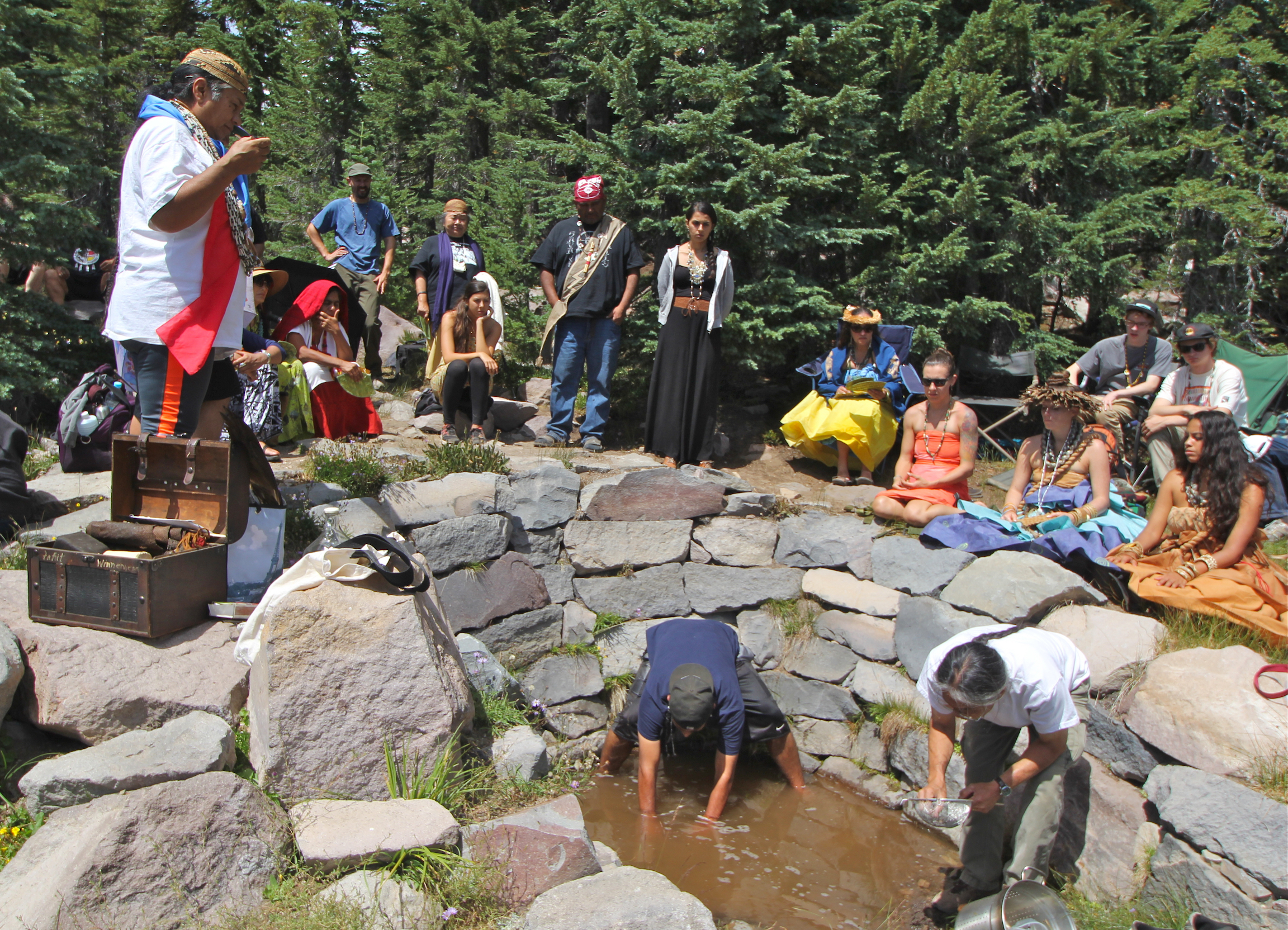
The Camp of the Sacred Stones has swelled from a few dozen to more than 2,500, according to Standing Rock Sioux Tribe officials. They are calling for further review of the Dakota Access oil pipeline, approved by the U.S. Army Corps of Engineers at the end of July without a full environmental assessment. Courtesy Little Redfeather Design/Honor the Earth.
Standing Rock Sioux Chairman David Archambault II continued calling for peace and nonviolence as demonstrations continued at a construction site for the Dakota Access oil pipeline, a day after a federal district court in North Dakota granted a temporary restraining order against those it deemed were interfering with the work.
“As we have said from the beginning, demonstrations regarding the Dakota Access pipeline must be peaceful,” Archambault said in a statement to reporters on August 17. “There is no place for threats, violence or criminal activity. That is simply not our way. So, the Tribe will do all it can to see that participants comply with the law and maintain the peace. That was our position before the injunction, and that is our position now.”
Archambault also alluded to President Barack Obama’s 2014 visit to the Standing Rock Sioux Reservation, and his offer of help, noting that back then he did not ask the President for anything.
“I just showed him the reality of our lives,” Archambault said. “I believe both he and Michelle Obama were touched. So now if there’s any way he can intervene and move this pipeline off our treaty lands, I’m asking him.”
The temporary restraining order, dated August 16, prohibits the named defendants “and unidentified individuals,” designated as John and Jane Does, “from interfering with its right to construct the Dakota Access Pipeline (the “Pipeline”) in accordance with all local, state, and federal approvals it has obtained,” read Dakota Access LLC’s request to the court. Construction was halted due to “safety concerns,” the company said.
People vowing to protect the waters of the Missouri have gathered on land along the river owned by Standing Rock tribal member LaDonna Allard. The Sacred Stone Spiritual Camp, as it is called, has been occupied since April. It swelled from a few dozen a week ago to more than 2,500 by August 17, according to an estimate by tribal officials.
The court sided with Dakota Access LLC and granted the restraining order on the grounds that the permits were valid and thus give the company the right to start construction on the portion that will cross Lake Oahe, which was formed by the Oahe Dam on the Missouri River.
“Dakota Access has obtained the necessary easements and rights of way to construct the Pipeline in North Dakota and the necessary federal, state, and local permits for the Oahe Crossing,” the court said in its motion. “In accordance with the permits and approvals obtained for the Pipeline project, Dakota Access has commenced construction activities in North Dakota.”
[…]
The $3.8 billion, 1,172-mile-long pipeline would cross the Missouri River itself, in addition to the lake. Standing Rock Sioux Tribe officials say that in crossing Lake Oahe and the Missouri River, the pipeline would disturb burial grounds and sacred sites on ancestral Treaty lands. Archambault said that over the past several days he had met and spoken with everyone from demonstrators, to tribal government and spiritual leaders, to state and local law enforcement officials.
“In all of these meetings, my message has been consistent—we need to work together in peace,” he said. “And, as I continue to spread this message, I believe that the word is getting out. Standing Rock wants there to be peace.”
The chairman said he has also met over the past year with federal officials from numerous agencies “to express the Tribe’s strong opposition and to let them know that we will be heard,” and noted the upcoming hearing on the tribe’s lawsuit against the Army Corps.
“Our basic position is that the Corps of Engineers has failed to follow the law and has failed to consider the impacts of the pipeline on the Standing Rock Sioux Tribe,” he said.
Also pending is a lawsuit filed by Dakota Access LLC against Archambault and several others simultaneously with the motion for a restraining order. The suit was filed after Archambault and about a dozen others were arrested during the demonstrations on August 11. Construction began on August 10.
Numerous tribes have expressed support for the Standing Rock Sioux, responding to a request for “proclamations, resolutions and/or letters of support,” the tribe said in an August 15 statement. All the tribe wants, Archambault said, is that the pipeline not be built across Treaty lands.
Sacred Rock Camp. – Rezpect Our Water. – Via ICTMN.












